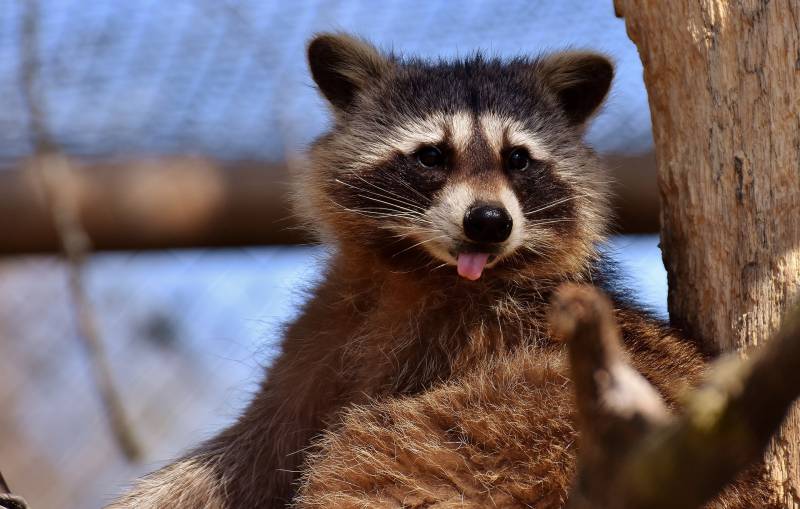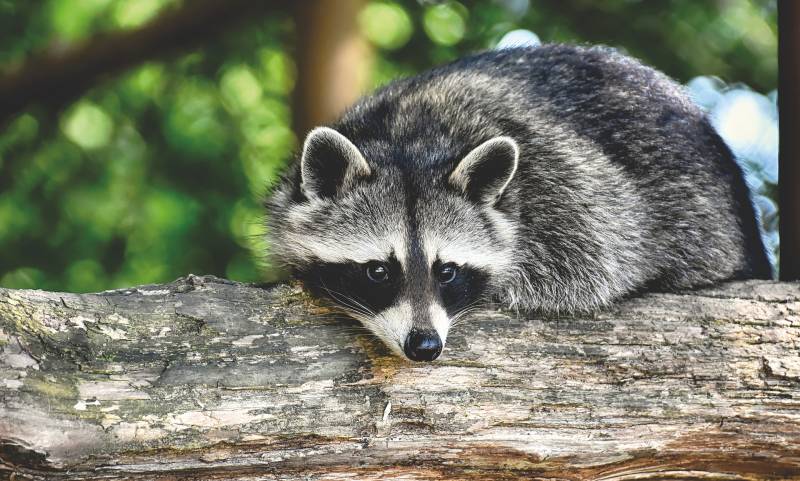Quick Navigation
Raccoons aren’t like regular domestic pets, yet it would be nice to know how to train a raccoon.
If you already have one, you know how they’re insanely energetic, unpredictable, and mischievous.
Although they can be highly affectionate to people they like, raccoons can instantly turn into sharp biters if you annoy them.
Being predators, it’s their nature to attack if they feel threatened.

Raccoons are fascinating and curious animals.
They want to explore everything.
If you own a raccoon as a pet, there is a high chance it has already turned your house into a complete mess if you have never trained it before.
Therefore, training a raccoon is a must.
Don’t be stressed if you’ve bought a raccoon and find it hard to tame the cute, energetic beast.
We’re here to guide you.
In this brief guide, we’ll help you with some tips and tricks that can help you train your raccoon!
Training A Raccoon
Training wild raccoons are relatively challenging.
Why?
Because you need to put a lot of effort into training wild raccoons compared to teaching a baby raccoon.
If you plan to own a raccoon, it is recommended to buy a baby raccoon.
Raccoons are intelligent creatures with excellent cognitive skills and memories.
And their cognitive skills and memory make it possible to tame them.
How To Train A Raccoon To Use A Litter Box
Raccoons are free-spirited, lively animals.
They love to climb and run around the house.
Therefore, you must provide them with enough space.
Try to create or buy a litter box that allows your raccoon to walk and jump freely.
Place the litter box in your house where you can easily watch him because raccoons can get mischievous anytime.
To get the attention of your raccoon, put some treats and chew toys.
In addition to toys, place a soft blanket inside the litter box so your raccoon will feel super comfortable.
Such incentives will help attract your baby raccoon to go willingly into the litter box and stay inside.
Use the short interval method to litter box train your raccoon.
Take your baby raccoon out of the litter box every 30 to 50 minutes for a play or cuddle.
And because raccoons are energetic and wild, they don’t like lying down all the time.
Get your raccoon accustomed to the same litter box again and again.
This routine will trigger the cognitive ability of your raccoon.
Being a smart creature, your raccoon will soon learn to go back and forth to the litter box.
To encourage and appreciate his docile behavior, reward him with treats and love.
Reward your raccoon whenever it follows the routine and gets in a litter box.
How To Train A Raccoon Not To Bite
While training your little pet raccoon, ensure you don’t get harsh or strict.
Raccoons can quickly turn aggressive if they feel threatened or scared.
So, deal politely with your raccoon and sweet talk it into submission.
Thanks to high cognitive skills and memory, your raccoon can understand and remember commanding words such as “Don’t bite,” “No!” and “Stop.”.
In this case, choose a single commanding word and use it every time you witness your baby raccoon biting.
This will trigger your baby raccoon’s instinct to learn not to bite.
Being predators, using sharp claws and teeth is the defensive method of most raccoons.
However, they’re affectionate and love to play with the people they like.
As we mentioned, don’t get harsh or stick with raccoons because it makes them feel threatened.

Even if your raccoon sometimes bites you hard, don’t strictly scold or spank it.
Remember, your raccoon should not view you as a threat or his enemy.
In addition to commanding words, slightly punish them by ignoring them.
If you witness your raccoon bite, stand up and give him a serious “stop” command and reject it.
Let your raccoon know that it isn’t supposed to bite anyone.
Every time your raccoon bites, use a command and then give it some soft chew toy to play with.
Leave the room you’re playing with your raccoon, or send it back to its litter box.
Your raccoon will soon get the idea it’s not acceptable to bite people or furniture but okay to chew toys.
Your raccoon’s instincts will soon help it understand that it isn’t supposed to bite people but is allowed to chew toys.
Do Raccoons Have Rabies?
Fortunately, only rabid raccoons have rabies!
How To Train A Raccoon Not To Climb On Humans
Being highly active, raccoons feel thrilled to climb walls and trees.
At the same time, raccoons often climb humans by treating them as trees or walls.
When your raccoon turns ten weeks old, teach it not to climb strangers or guests.
To stop your raccoon from doing it, command it with “NO.”
Instead, give your raccoon artificial trees or branches to climb and jump.
Repeat this every time it climbs a human.
How To Train A Raccoon Not To Destroy Household Things
It can be challenging for your raccoon pet to distinguish between his toys and household things.
Raccoons can actively assume all the items in the house as their toys.
This means that they can easily take everything as their own.
Hence, we highly recommend you put precious things under locks.
When you witness your raccoon destroying your pillow or sofa, command it with a “NO.”
Replace pillows and the sofa with chew toys for your raccoon to play on.
When your raccoon follows your command, reward it with a treat to encourage your raccoon to follow your commands.
Conclusion
Taming wild raccoons isn’t an easy treat to get, mainly because raccoons are unpredictable and moody pets.
Raccoons are fascinating and curious animals, and if you raise them from a young age, they’ll soon learn to be a little docile and obedient.
Provide your raccoon love, care, and space to play.
Your raccoon will surely not let you get bored ever again.
Remember to select a spacious litter box for your raccoon.
You also need to be patient and polite while training them.
Soon enough, it will learn to follow your house rules more obediently!

Purrfect n’ Pawesome is the brainchild of Amanda, who has been into researching and writing about pets to help other pet parents in nurturing their adorable pets. Currently, she runs Purrfect n’ Pawesome along with her team of experienced and dedicated pet experts. Along with being an awesome writer and entrepreneur, Amanda is a cat mom to two innocently spoiled cats, Balanca and Scruffy.
She has been writing about pet care and nurturing and wants to share her readers’ experiences, learnings, and knowledge.
Over the years, she had the opportunity to work with various pet owners having multiple breeds, and that exposure gave her experience and the lessons of a lifetime.
Her family, her entire universe revolves around her two cats, who give her endless support and inspiration to move ahead with her objectives in life. Amanda is a live example of a balanced approach to all parenthood questions we all face in life.
